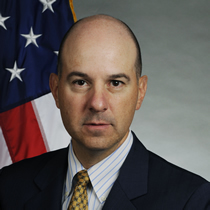Related Research Articles

Asure Software is a software company. Prior to September 13, 2007, the company was known as Forgent Networks. After rebranding as Asure Software, the company expanded into offering human capital management (HCM) solutions, including payroll, time & attendance, talent management, human resource management, benefits administration and insurance services.
Prior art is a concept in patent law used to determine the patentability of an invention, in particular whether an invention meets the novelty and the inventive step or non-obviousness criteria for patentability. In most systems of patent law, prior art is generally defined as anything that is made available, or disclosed, to the public that might be relevant to a patent's claim before the effective filing date of a patent application for an invention. However, notable differences exist in how prior art is specifically defined under different national, regional, and international patent systems.
Patent infringement is the commission of a prohibited act with respect to a patented invention without permission from the patent holder. Permission may typically be granted in the form of a license. The definition of patent infringement may vary by jurisdiction, but it typically includes using or selling the patented invention. In many countries, a use is required to be commercial to constitute patent infringement.
The Trilateral Patent Offices, or simply the Trilateral Offices, are the European Patent Office (EPO), the Japan Patent Office (JPO) and the United States Patent and Trademark Office (USPTO). In 1983, these patent offices set up a programme of co-operation in an effort to "improve efficiency of the global patent system".
Patent prosecution describes the interaction between applicants and their representatives, and a patent office with regard to a patent, or an application for a patent. Broadly, patent prosecution can be split into pre-grant prosecution, which involves arguing before, and sometimes negotiation with, a patent office for the grant of a patent, and post-grant prosecution, which involves issues such as post-grant amendment and opposition.
In international law and business, patent trolling or patent hoarding is a categorical or pejorative term applied to a person or company that attempts to enforce patent rights against accused infringers far beyond the patent's actual value or contribution to the prior art, often through hardball legal tactics. Patent trolls often do not manufacture products or supply services based upon the patents in question. However, some entities which do not practice their asserted patent may not be considered "patent trolls" when they license their patented technologies on reasonable terms in advance.
NTP, Inc. is a Virginia-based patent holding company founded in 1992 by the late inventor Thomas J. Campana Jr. and Donald E. Stout. The company's primary asset is a portfolio of 50 US patents and additional pending US and international patent applications. These patents and patent applications disclose inventions in the fields of wireless email and RF Antenna design. The named inventors include Andrew Andros and Thomas Campana. About half of the US patents were originally assigned to Telefind Corporation, a Florida-based company partly owned by Campana.
This is a list of legal terms relating to patents. A patent is not a right to practice or use the invention, but a territorial right to exclude others from commercially exploiting the invention, granted to an inventor or his successor in rights in exchange to a public disclosure of the invention.

Crowdsourcing involves a large group of dispersed participants contributing or producing goods or services—including ideas, votes, micro-tasks, and finances—for payment or as volunteers. Contemporary crowdsourcing often involves digital platforms to attract and divide work between participants to achieve a cumulative result. Crowdsourcing is not limited to online activity, however, and there are various historical examples of crowdsourcing. The word crowdsourcing is a portmanteau of "crowd" and "outsourcing". In contrast to outsourcing, crowdsourcing usually involves less specific and more public groups of participants.

Google Patents is a search engine from Google that indexes patents and patent applications.
The involvement of the public in patent examination is used in some forms to help identifying relevant prior art and, more generally, to help assessing whether patent applications and inventions meet the requirements of patent law, such as novelty, inventive step or non-obviousness, and sufficiency of disclosure.
The Peer To Patent project is an initiative that seeks to assist patent offices in improving patent quality by gathering public input in a structured, productive manner. Peer To Patent is the first social-software project directly linked to decision-making by the federal government.

David "Dave" J. Kappos is an attorney and former government official who served as Under Secretary of Commerce for Intellectual Property and Director of the United States Patent and Trademark Office (USPTO) from 2009 to 2013. Kappos is currently a partner at New York law firm Cravath, Swaine & Moore.

Vringo was a technology company that became involved in the worldwide patent wars. The company won a 2012 intellectual property lawsuit against Google, in which a U.S. District Court ordered Google to pay 1.36 percent of U.S. AdWords sales. Analysts estimated Vringo's judgment against Google to be worth over $1 billion. The Court of Appeals for the Federal Circuit overturned the District Court's ruling on appeal in August 2014 in a split 2-1 decision, which Intellectual Asset Magazine called "the most troubling case of 2014." Vringo appealed to the United States Supreme Court. Vringo also pursued worldwide litigation against ZTE Corporation in twelve countries, including the United Kingdom, Germany, Australia, Malaysia, India, Spain, Netherlands, Romania, China, Malaysia, Brazil and the United States. The high profile nature of the intellectual property suits filed by the firm against large corporations known for anti-patent tendencies has led some commentators to refer to the firm as a patent vulture or patent troll.
Citizen sourcing is the government adoption of crowdsourcing techniques for the purposes of (1) enlisting citizens in the design and execution of government services and (2) tapping into the citizenry's collective intelligence for solutions and situational awareness. Applications of citizen sourcing include:

The Leahy–Smith America Invents Act (AIA) is a United States federal statute that was passed by Congress and was signed into law by President Barack Obama on September 16, 2011. The law represents the most significant legislative change to the U.S. patent system since the Patent Act of 1952 and closely resembles previously proposed legislation in the Senate in its previous session.
Article One Partners (AOP) is an online prior art search and intellectual property research crowdsourcing community. AOP was acquired by RWS Group in October 2017 and the AOP Connect crowdsourcing platform is now part of the IP Research group within RWS. RWS IP Research provides crowdsourced prior-art-search services by utilizing an online research community. The company's President stated that, as of June 30, 2018, AOP comprises "more than 40,000 in over 170 countries."
Crowdsourcing software development or software crowdsourcing is an emerging area of software engineering. It is an open call for participation in any task of software development, including documentation, design, coding and testing. These tasks are normally conducted by either members of a software enterprise or people contracted by the enterprise. But in software crowdsourcing, all the tasks can be assigned to or are addressed by members of the general public. Individuals and teams may also participate in crowdsourcing contests.
Government crowdsourcing is a form of crowdsourcing employed by governments to better leverage their people's collective knowledge and experience by tapping into their ability to see connections, understand issues, and coordinate action. It has tended to take the form of public feedback, project development, or petitions in the past, but has grown to include public drafting of bills and constitutions, among other things. This form of public involvement in the governing process differs from older systems of popular action, from town halls to referendums, in that it is primarily conducted online or through a similar IT medium.
References
- 1 2 3 Jessica Karmasek (3 September 2015). "Initiative offers companies a better way to fight costly, frivolous patent litigation". Legal News Line. Legal News Line. Retrieved 11 November 2016.
- 1 2 3 4 5 6 7 8 Jessica M. Karmasek (19 December 2014). "CEO, IP expert: 'Crowdsourcing' improves exam process, makes for stronger patents". Legal News Line. Legal News Line. Retrieved 11 November 2016.
- 1 2 "Patexia Announces the Launch of its First Online Contest". Patexia. Patexia, Inc. 17 May 2012. Retrieved 11 November 2016.
- 1 2 3 Amanda Ciccatelli (27 March 2015). "Patexia uses the power of crowdsourcing to control patent-litigation costs". Inside Counsel. ALM Media, LLC. Retrieved 11 November 2016.
- 1 2 Brian Dunbar (5 June 2015). "NASA Uses Crowdsourcing for Open Innovation Contracts". NASA. National Aeronautics and Space Administration. Retrieved 11 November 2016.
- ↑ "Our Story". CPA Global. CPA Global. 2016. Retrieved 11 November 2016.
- ↑ "Patexia Visualization of US Patent Data: A Free Online Tool" (Wordpress). Intellogist. Landon IP. 31 May 2011. Retrieved 11 November 2016.
- ↑ "Patexia Announces Public Beta Release of IP Research". Patexia. Patexia, Inc. 14 March 2011. Retrieved 11 November 2016.
- ↑ Jeremy (16 May 2011). "Monday miscellany". The IPKat. The IPKat. Retrieved 11 November 2016.
- ↑ Olga Kharif (18 January 2013). "Crowdsourcing the Fight Against Tech Patent Trolls". Bloomberg. Bloomberg LP. Retrieved 11 November 2016.
- ↑ Amanda Ciccatelli (1 September 2015). "Patexia helps collaboratively fight frivolous patent litigation". Inside Counsel. ALM Media, LLC. Retrieved 11 November 2016.
- ↑ "About Us". Patexia. Patexia, Inc. 2010–2016. Retrieved 11 November 2016.
- 1 2 "Contest Rules". Patexia. Patexia, Inc. 2010–2016. Retrieved 11 November 2016.
- ↑ "Tire Pressure Monitoring System". Patexia. Patexia, Inc. 16 October 2016. Retrieved 11 November 2016.
- ↑ "The Community Guide". Patexia. Patexia, Inc. 2010–2016. Retrieved 11 November 2016.
- ↑ "The Research Guide". Patexia. Patexia, Inc. 2010–2016. Retrieved 11 November 2016.
- ↑ "Connect > Find Intellectual Property Legal Jobs". Patexia. Patexia, Inc. 2010–2016. Retrieved 11 November 2016.
- ↑ Jessica M. Karmasek (17 November 2014). "U.S. PTO considers using 'crowdsourcing' to head off patent trolls". Legal News Line. Legal News Line. Retrieved 11 November 2016.